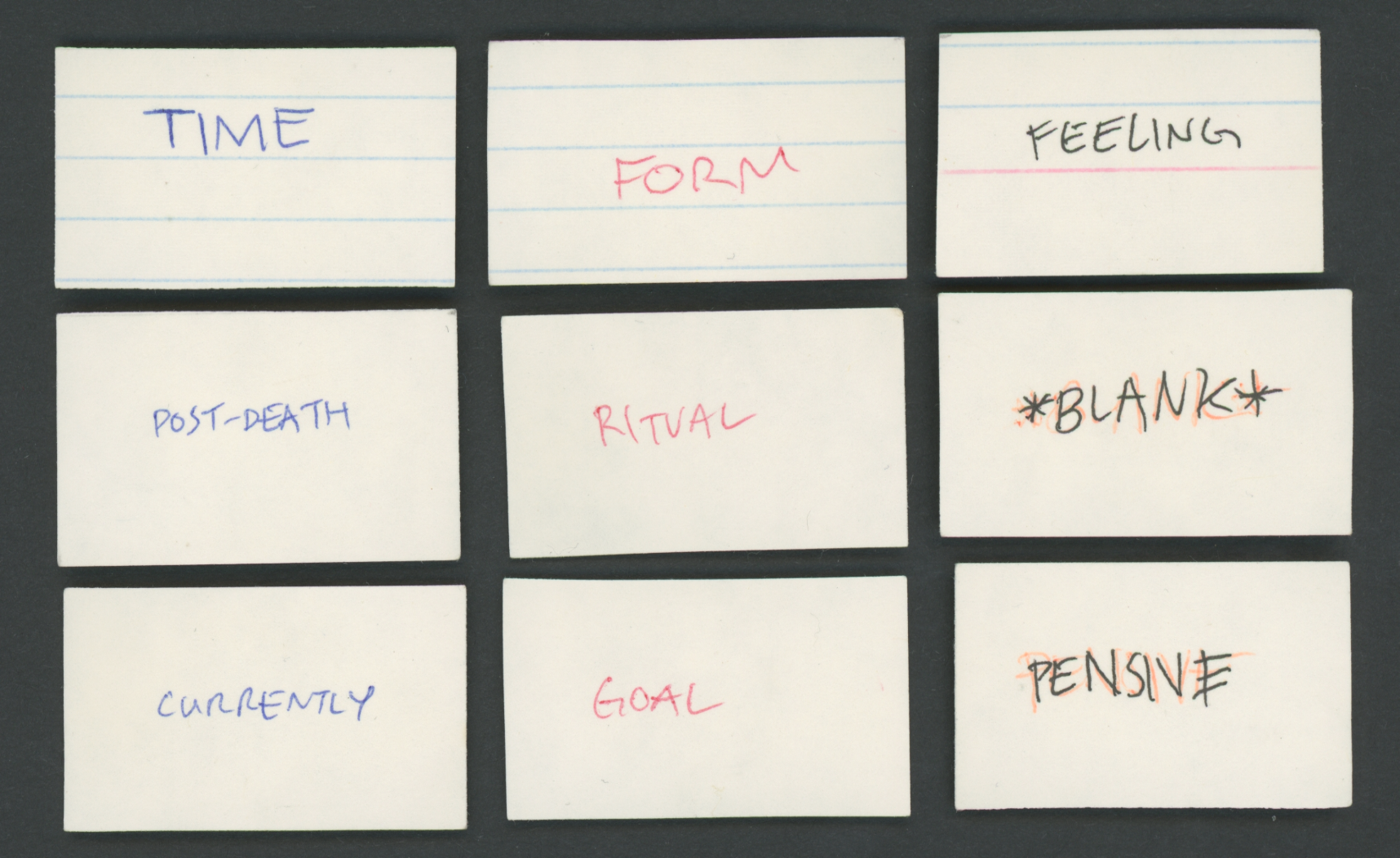
this site came from a few places.
i have been going through my things in an effort to touch everything & actively construct myself in deciding what to keep/archive.
at the same time, i felt the need to code my own website so i could have a space online that was not controlled by corporations.
at one point i wanted to upload everything—objects, photos, memories—then i learned about vannevar bush’s memex.
this urge faded when i realized there would be too much information to make sense of.
by [re]presenting *some* of these things i hoped the new context would reveal patterns from my life.
during the workshop john commented that this process seemed therapeutic—although i wouldn’t recommend it over therapy, it’s true it was.
i had an ambitious vision for someone who didn’t know how to code…i originally imagined the site’s style abstract, with each thing as a 3D rendered sphere[1], orbiting around the page— their position affected by their relationships with one another.
i realized my capabilities while working through the demos and had to rethink the sites structure as a 2D grid.
correlations that would have been understood through the positions of the spheres now had to be represented in another way.
so, i added petals and suddenly my orbs were flowers[2].
the whole site quickly became a lot more wholesome and illustrative, leading to .garden :)
my relationship with the web changed significantly since fruitful school.
i constantly kill styles, use web developer tools, and view source.
being provided with the history of the web and a breakdown of how it actually works felt important in my learning process.
i also loved the physical reader filled with articles.
since the workshop i am more optimistic about the internet.
for maybe the first time, i understand the potential of a distributed web.
i feel both inspired & well-equipped to code small sites that aid in reclaiming a people-governed internet that nurture both our world and worlds.
i can be indecisive, so, i created a protocol to determine which things would be displayed on the site from my archive.
using a physical card drawing system—based off of sal randolph’s game of art—i drew three cards as a starting point.
one card from each category: time, form, feeling—there are 30 words per category[3].
based on the combination of words i pulled, i chose a thing or created a mash-up of things to upload.
for example: the combination of cards that determined content one- funeral wishes[4], are postdeath, ritual, *blank*.
so, for the funeral wishes example: i added the words currently, goal, pensive[5].
i am curious about how mre.garden will evolve. it is a large landscape so i have zoned the .garden for proper maintenance. currently the .garden has the potential to host 900 seeds! in order to sustain fertile soil i will be tackling 75 plots per week. with this schedule, i imagine the .garden will fully transformation every three months. at the end of this cycle, annuals will yield seeds signaling the end of the growing season while perennials will flower for more seasons to come.[6]
hmm, i would like to experience websites with more random-shuffle buttons and less pop-up ads.
michael arntzenius’ against software development part three provides a framework for how to create the virtual world i would like to experience in the future.
“III.
To those who have a choice:
Refuse to work on systems that profit from digital addictions.
Refuse to work on systems that centralize control of media.
Refuse to work on systems that prop up an unjust status quo.
Refuse to work on systems that require unsustainable tradeoffs.
Refuse to work on systems that weaponize the fabric of society.
Above all, refuse to work on systems that understand and manipulate people,
but offer no affordance for their subjects to understand and manipulate them.
Work on something that matters, if only to you.
Work on something that helps people, even in small ways.
Work on making things understandable.
Once, software let a lucky few of us escape to virtual worlds, choose our own
communities, and explore alternate realities. These days, for better or worse,
software defines everyone's reality. Let's build one worth living in.”
